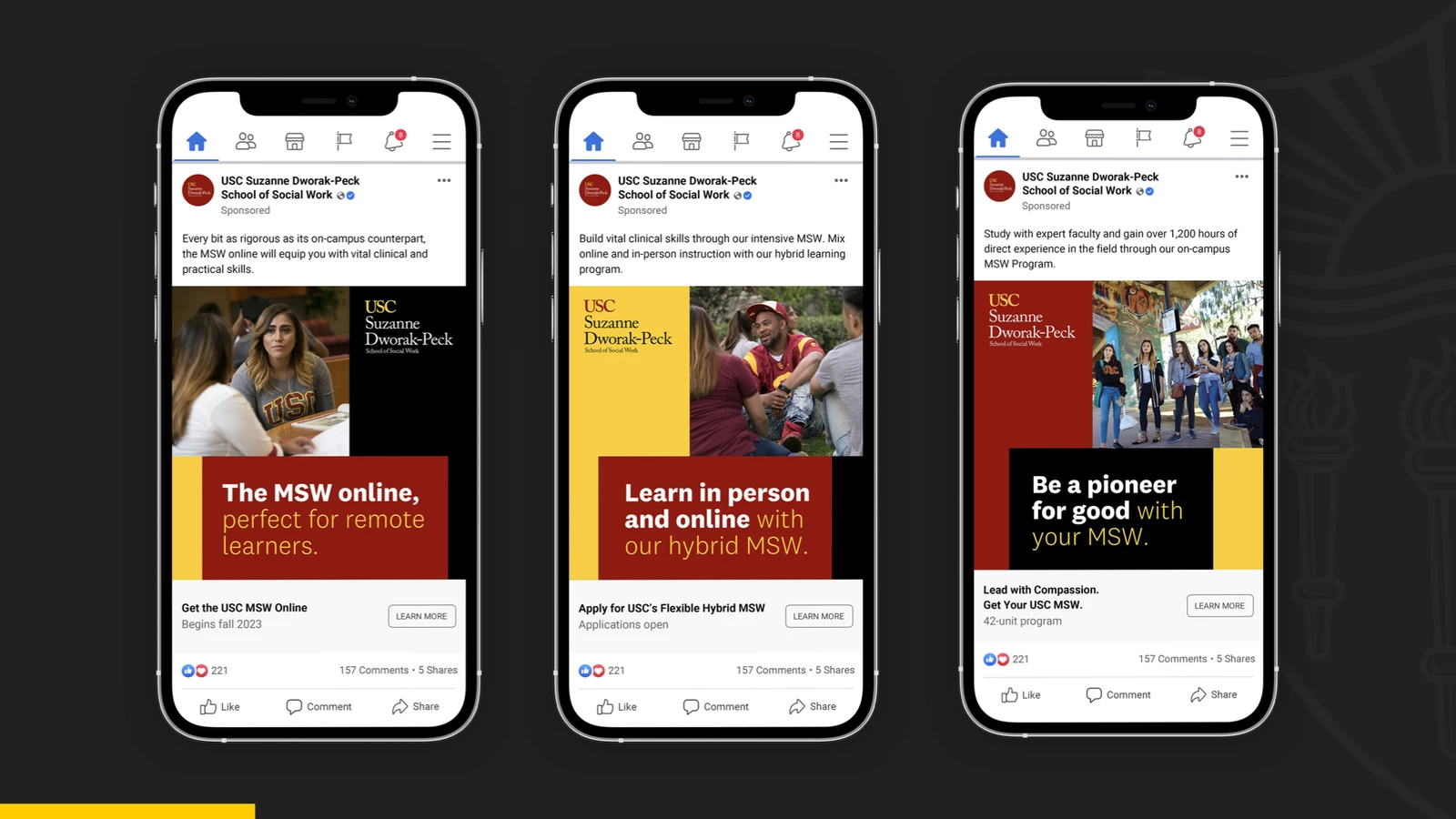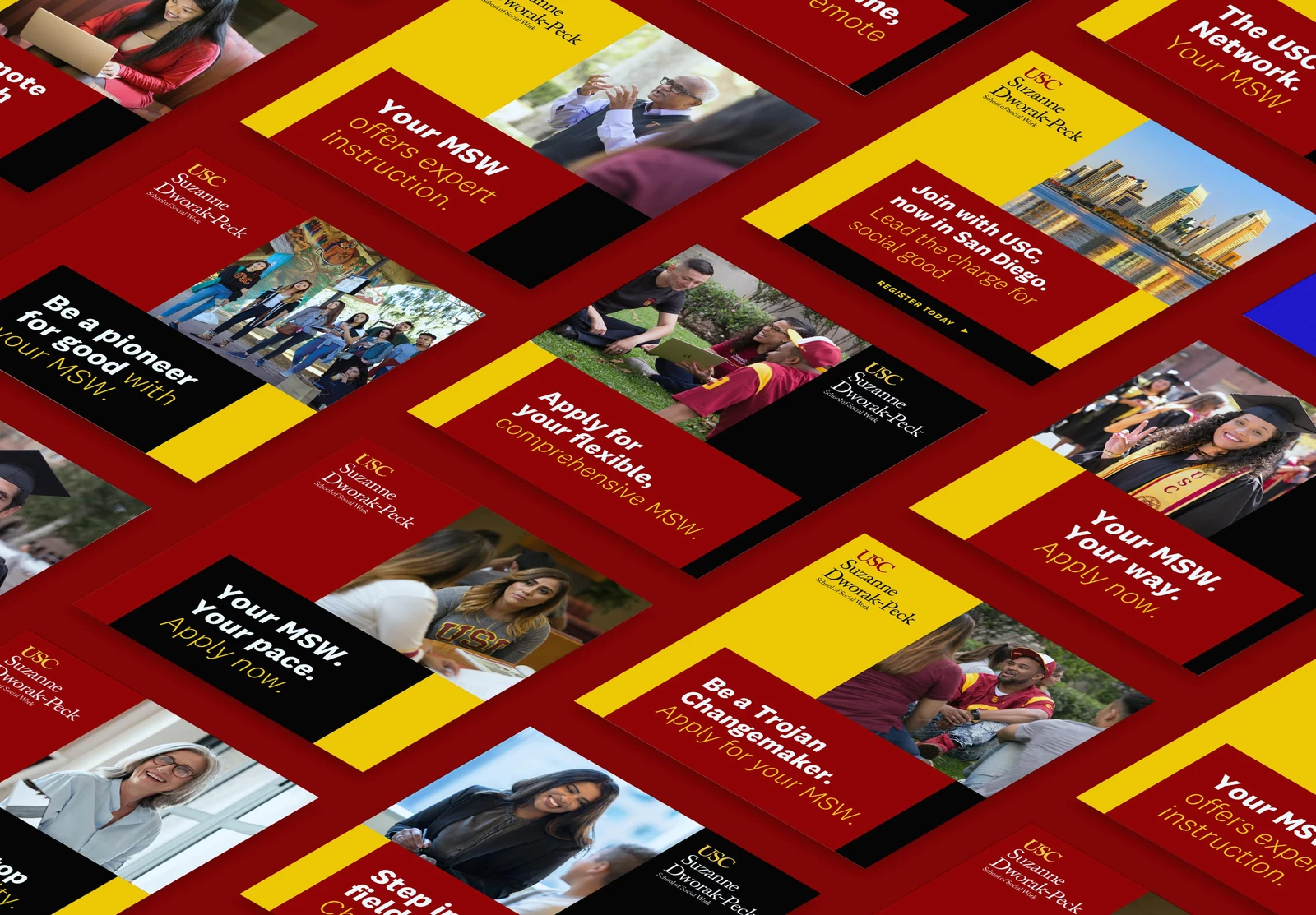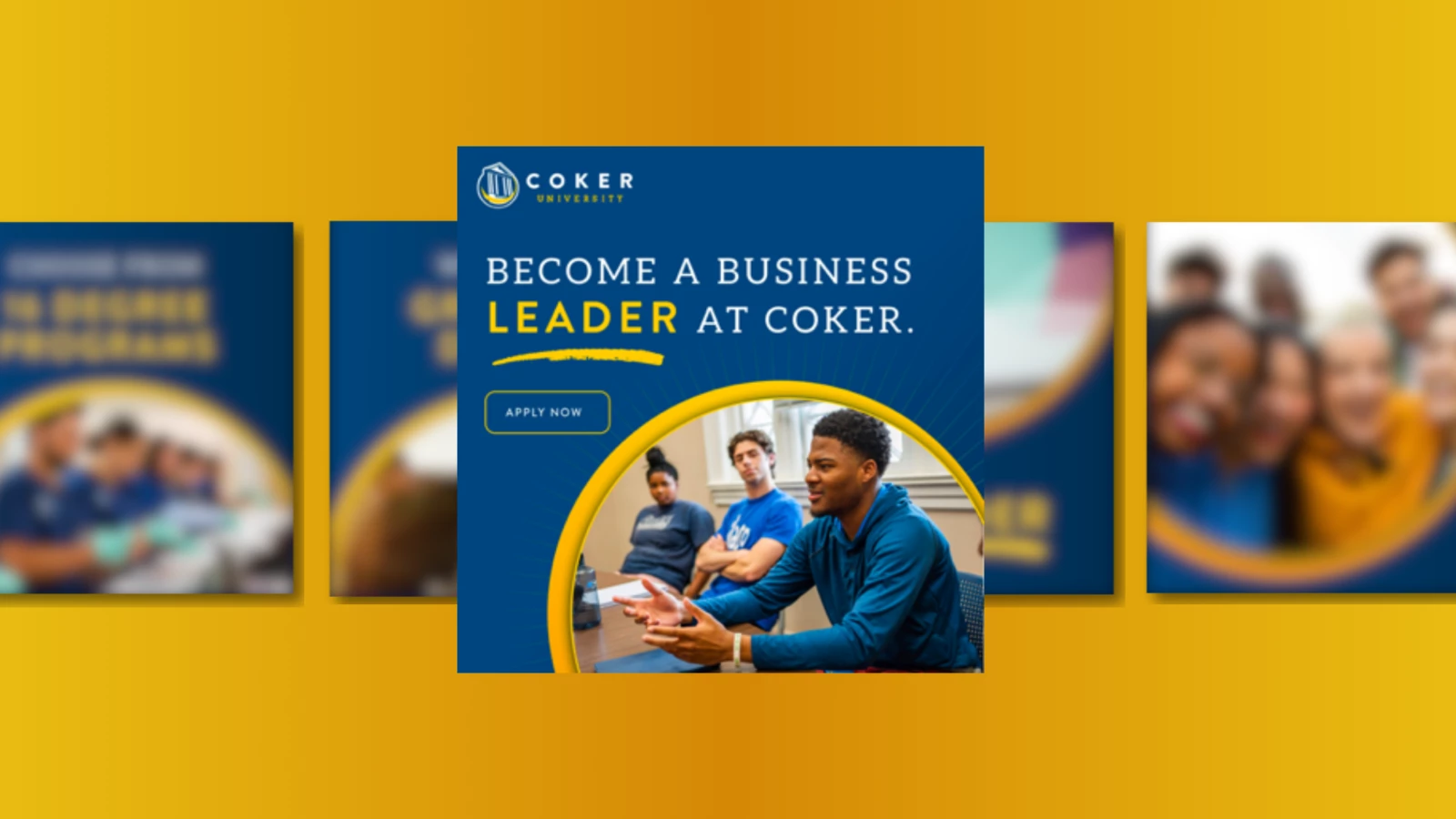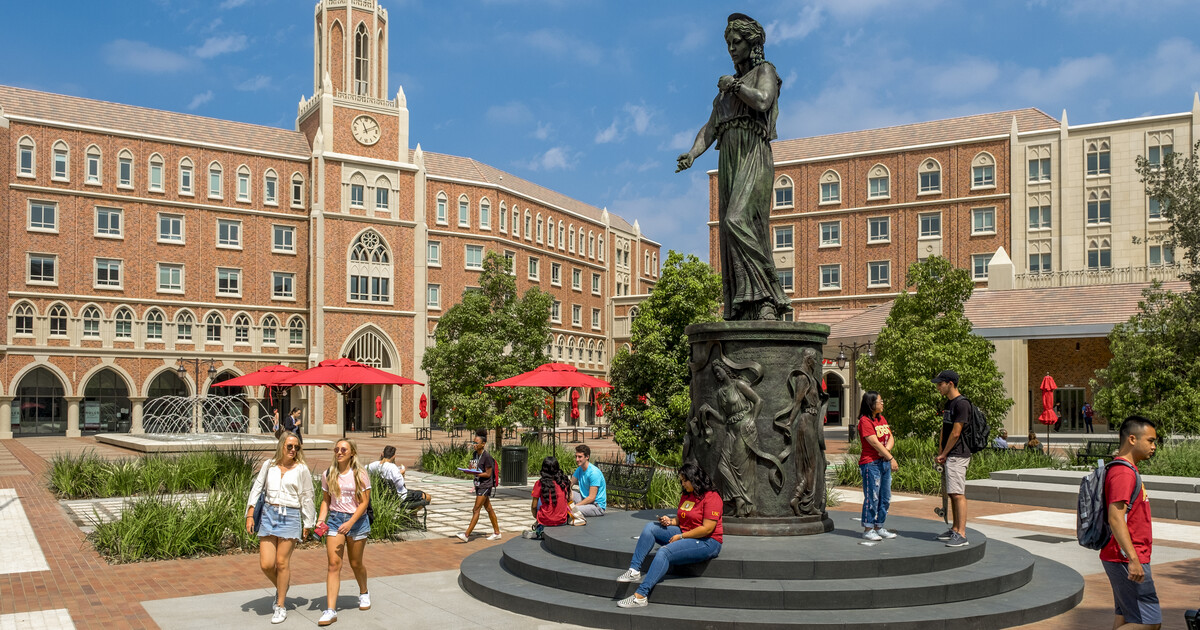Insights
The Future of Higher Education Marketing: Navigating the Challenges and Opportunities

Higher education institutions have faced a significant challenge recently: declining enrollment. This trend has been exacerbated by a rapidly changing marketing landscape, with traditional strategies becoming less effective in reaching and engaging with prospective students, particularly the digitally native Generation Z. To address these challenges, institutions must adapt their marketing approaches to resonate with this new audience.
The Problem: Declining Enrollment and a Changing Landscape
Recently, higher education institutions nationwide are experiencing a decline in enrollment. Factors such as rising tuition costs, increased competition from online programs and alternative education options, and shifting demographics have all contributed to this trend. The COVID-19 pandemic has further accelerated these challenges, forcing institutions to rethink their marketing strategies in the face of uncertainty.
One key driver behind the decline in enrollment is the changing nature of the student population. Generation Z, born between the mid-1990s and early 2010s, now make up most college-aged students. Unlike previous generations, Gen Z has grown up in a digital world, with constant access to information and a high level of digital literacy. As a result, traditional marketing tactics, such as print ads and campus events, are less effective in capturing their attention.
The Solution: Cyberwoven's Approach to Higher Education Marketing
Cyberwoven is at the forefront of redefining higher education marketing for the digital age. Through innovative strategies and a deep understanding of Gen Z's preferences and behaviors, Cyberwoven has helped institutions adapt to and thrive in the changing landscape.
One key aspect of Cyberwoven's approach is its focus on digital marketing channels. By leveraging social media platforms, targeted online advertising, and engaging content, Cyberwoven helps institutions reach prospective students where they are most active. This approach increases brand visibility and allows institutions to create meaningful connections with Gen Z audiences.
Another crucial element of Cyberwoven's strategy is its emphasis on personalization. Recognizing that Gen Z values authenticity and individuality, Cyberwoven helps institutions tailor their messaging to resonate with each student personally. This personalized approach increases engagement and allows institutions to stand out in a crowded market.
All Additional Channels Must Point to One Source of Truth: The Website
A cohesive and influential higher education marketing strategy should include channels pointing to one truth source: the institution's website. The website serves as the central hub for information, providing prospective students with a comprehensive overview of the institution's offerings, admissions process, and campus life.
"There are a lot of digital channels by which people acquire information about schools," says Dan Hoover, Cyberwoven Director of Strategy. "Still, if you survey prospective students, they're gonna list the school's website as a primary mechanism for evaluating whether it's a fit for them."
By directing traffic to the website, institutions can ensure prospective students receive consistent and up-to-date information, ultimately increasing the likelihood of conversion. An easy-to-navigate site with clear pathways to conversion—one that clearly (and briefly) outlines what differentiates it from other competitors in the marketplace—is a vital component of any successful enrollment marketing strategy.
Cyberwoven efficiently engages prospective students through tailored social media, targeted ads, and captivating content.

USC Suzanne Dworak-Peck School of Social Work Fall Enrollment Campaign

USC Suzanne Dworak-Peck School of Social Work Fall Enrollment Campaign
Success Stories: Cyberwoven's Success in Higher Education Marketing
Cyberwoven's approach to higher education marketing has yielded impressive results for its clients. One example is the Suzanne Dworak-Peck School of Social Work, University of Southern California (USC), which partnered with Cyberwoven to revamp its marketing strategy. By implementing a mix of digital marketing tactics, USC saw a significant increase in student engagement and enrollment numbers.
"Working with the team at Cyberwoven is a wonderful experience. Their professionalism, creativity, and market knowledge will drive your organization to meet its goals," says Joanna Scott, marketing and communications manager of the University of Southern California’s Suzanne Dworak-Peck School of Social Work. "They focus on finding the best resolution to help your program reach its fullest potential," Joanna continues.
Enhancing Higher Education Marketing: Leveraging the Enrollment Funnel and Authentic Marketing for Gen Z
The enrollment funnel is critical for attracting and retaining students in higher education marketing. By understanding and optimizing this funnel, institutions can effectively target prospective students at various stages of their decision-making process. Additionally, in the era of Gen Z, authenticity, and peer influence play pivotal roles in shaping their perceptions and decisions. Here's how Cyberwoven recommends leveraging these aspects for successful higher education marketing.
Leveraging the Enrollment Funnel as a Marketing Tool
Aligning the enrollment funnel with the marketing funnel is a strategic approach that allows institutions to guide prospective students seamlessly from the initial awareness stage to enrollment. Institutions build awareness at the top of the marketing funnel through targeted campaigns. As students move through the marketing funnel, institutions engage them with compelling content to nurture their interest, such as virtual campus tours and testimonials, aligning with the interest stage. Further down the funnel, institutions encourage students to apply by providing personalized communication and application support, aligning with the application stage.
Finally, institutions support students in making enrollment decisions through events and personalized assistance, aligning with the decision and enrollment stages, increasing enrollment rates and student retention. By aligning marketing efforts with the stages of the enrollment funnel, institutions can effectively guide prospective students from initial awareness to enrollment, ultimately increasing enrollment rates and student retention.
Authentic Marketing for Gen Z
Gen Z values authenticity and transparency in marketing messages. To resonate with this audience, institutions should:
- Use Real Voices: Incorporate authentic voices, such as student testimonials and faculty interviews, in marketing materials to showcase the authentic experiences of the institution.
- Peer-to-Peer Marketing: Encourage current students to be brand ambassadors and share their experiences on social media platforms. This peer-to-peer marketing can be highly effective in reaching and influencing Gen Z.
- Transparent Communication: Be transparent about the institution's values, policies, and practices. Gen Z appreciates honesty and is more likely to trust transparent institutions in their communication.
As students move through the marketing funnel, institutions engage them with compelling content to nurture their interests.

Benedict College Enrollment Campaign

Coker University Enrollment Campaign
Success Stories: Successful Implementation of Enrollment Funnel Marketing
Cyberwoven has helped institutions nationwide optimize enrollment funnels and implement authentic marketing strategies. For example, Benedict College, a historically black college in Columbia, South Carolina, partnered with Cyberwoven to enhance its enrollment marketing efforts. Benedict College sought to increase enrollment and attract a more diverse student body.
Through a comprehensive analysis of Benedict College's enrollment funnel, Cyberwoven identified critical areas for improvement. By implementing targeted email campaigns and social media strategies, Cyberwoven helped Benedict College reach prospective students at various stages of the enrollment process.
As a result of these efforts, Benedict College saw a significant increase in applications and campus visits. The college's enrollment numbers rose, attracting a more diverse pool of applicants. Benedict College's partnership with Cyberwoven helped the college achieve its enrollment goals by strengthening its brand and reputation in the higher education market.
Conclusion: A Holistic Approach to Higher Education Marketing
In conclusion, successful higher education marketing in the era of Gen Z requires a holistic approach that integrates the enrollment funnel, authentic marketing strategies, and a deep understanding of Gen Z's preferences and behaviors. By leveraging these aspects, institutions can attract and retain students effectively, ensuring a bright future for higher education marketing.
Today's students pursue their degrees episodically, gathering course credits in a piecemeal fashion at various institutions, sometimes over many years. As Dan says, "People are coming in and out of educational contexts at different points in their lives and with different goals." We're seeing the average number of institutions someone attends go up, and people want to take smaller bites of education.
As we look to the future, institutions that are willing to adapt and embrace change will succeed. By leveraging the latest technologies and strategies, institutions can reach and engage with Gen Z students meaningfully, ensuring a bright future for higher education marketing.
Effective higher education marketing blends the enrollment process, genuine strategies, and keen insights into student preferences and behaviors.
